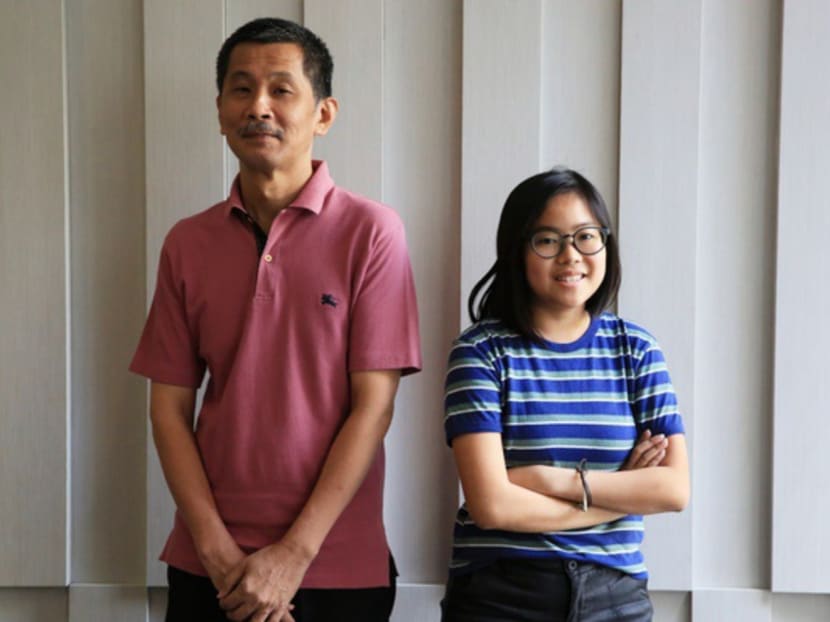Singapore needs more organ donors
It was reported this week that Mr Lim Kok Seng, 54, is the first person in Singapore to donate part of his liver to a total stranger, teenager Lim Si Jia, who was suffering from glycogen storage disease — an inherited metabolic disorder. The surgery went smoothly, and both appeared well during media interviews.

Mr Lim Kok Seng (left) is the first person in Singapore to donate part of his liver to a complete stranger — 16-year-old Lim Si Jia. Photo: Koh Mui Fong/TODAY
It was reported this week that Mr Lim Kok Seng, 54, is the first person in Singapore to donate part of his liver to a total stranger, teenager Lim Si Jia, who was suffering from glycogen storage disease — an inherited metabolic disorder. The surgery went smoothly, and both appeared well during media interviews.
As a hepatologist who has been taking care of patients with liver diseases, I would like to highlight several salient points about the disease and the importance of having more people step forward to donate their livers.
Glycogen storage disease is an inherited liver disease where glycogen cannot be broken down into glucose. It is a rare disease that affects about one in 20,000 to 40,000 individuals.
Glycogen is generally stored in the liver, muscles and the heart. When a person’s glucose is depleted, glycogen is converted to glucose to sustain normal body functions.
Excessive glycogen stored in these organs can lead to dysfunction in the liver, skeletal muscle and even the heart. And defective conversion also causes hypogylcemia, low glucose level in the blood, which leads to tiredness, fainting and even convulsions.
Patients with glycogen storage disease need to drink starch water all the time. Starch can be converted into glucose easily, so as to prevent hypoglycaemia.
But persistently low glucose results in long-term problems such as being short, osteoporosis and delayed puberty. Excessive glycogen also causes complications such as liver tumours, kidney problems and a weak heart.
A liver transplant is a recognised treatment for glycogen storage disease, as the new liver would have normal glycogen metabolism.
Many studies have shown excellent results with good long-term survival and liver function after a transplant.
There are two main types of liver donors: Deceased donors and live donors. Deceased donors are individuals who have been declared brain-dead. Usually, the whole liver, together with other organs, such as the heart, lungs, corneas and kidneys, are procured for transplantation.
But perhaps due to cultural reasons, deceased-donor transplant rate in Singapore is low, at about five per one million population.
This compares dismally with western countries where deceased donor rates range from 20 to 35 per one million population.
Not surprisingly, there is a long waiting list for organ transplants in Singapore. According to the latest Ministry of Health data, there are 54 liver patients on the waiting list for a transplant.
Unfortunately, about half of these patients will die before they can receive a liver.
The second group are live donors, healthy and willing individuals who donate up to 60 per cent of their liver for transplantation.
Since the first report published in 1994 by a group of Japanese transplant surgeons on live-donor liver transplants (LDLT), techniques of LDLT have been perfected by surgeons in Asia, where the rate of deceased donation is low.
LIVE, NON-RELATED, DONORS
The LDLT exploits two fundamental principles of the liver. First, the human body can function normally even with just 25 per cent of the liver mass. So, a healthy donor can have 60 per cent of his liver removed for donation and still survive.
Second, the liver has great regeneration potential. After a live liver donation, the donor’s remaining 40 per cent liver will regrow to 100 per cent of its original size in two months.
Similarly, the 60 per cent transplanted liver in the receiver’s body will also grow to 100 per cent in size after two months. In other words, one organ becomes two organs.
The first LDLT in Singapore was performed in 2002. To date, about half the liver transplants performed in Singapore are from live donors.
In the past, all live liver donors were “directed” donors. This means they were usually family members or close friends of the patients in need of a transplant.
Besides the patients’ spouse or children, I have seen distant relatives, friends, colleagues and even religious leaders stepping up as potential donors for those suffering from a liver disease.
But this recent case is special: It is a non-directed donation. Mr Lim did not donate to save a relative or a friend. Mr Lim volunteered to donate part of his liver to whoever was on top of the waiting list for a transplant.
This is truly altruistic as Mr Lim did not have any emotional relationship with the potential recipient.
Fortunately, under the expert hands of surgeons, the risk of Mr Lim dying is very low, with the mortality risk at about 0.5 per cent, and the risk of serious complications less than 5 per cent.
Most live liver donors, such as Mr Lim, would be discharged five to seven days after the surgery.
After resting for two months, most live donors can resume their normal work and exercise, with very few long-term complications.
As an ancient Chinese saying goes: “To save one life is better than to build a seven-storey pagoda.”
Indeed, Mr Lim’s action is far more monumental than any monument. Singapore needs more individuals such as Mr Lim.
ABOUT THE AUTHOR
Dr Desmond Wai is a gastroenterologist and hepatologist in private practice.






